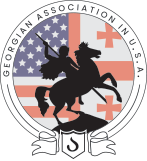On May 26, 1918 Georgia reestablished a sovereign state and self-government which had been lost in the wake of the annexation of Georgia in 1801 by the Russian empire. The Democratic Republic of Georgia was recognized in 1918-21 by the Governments of the United States, Canada, Great Britain, France, Germany, Italy, Norway, Sweden, Switzerland and Denmark. On May 7, 1920, the Republic of Georgia signed a Peace Treaty with the Russian Soviet Federated Socialist Republic in which Soviet Russia unquestionably recognized “the freedom and independence of the Government of Georgia” (Article I) and renounced all “interference in the internal affairs of Georgia” (Article II). In February 1921, the Soviet Army invaded Georgia, occupying the capital city of Tbilisi on February 25th. Almost immediately the resistance of the Georgian people to Soviet Russian rule manifested itself in numerous popular insurrections and demonstrations. The constant theme of these events was a demand for self-determination, reestablishment of independence and an end to Soviet Russian occupation and russification of Georgia. Since that time and until Georgia reclaimed her independence in April 1991, Georgians struggled incessantly against Soviet Russian rule. Among key events were the:
- Insurrection of 1924 when Georgian nationalist groups succeeded for a short period in taking over a number of cities from Soviet elements before thousands of nationalists were massacred by the Red Army and the opposition movement took refuge in the Caucasus Mountains from where they continued to attack Soviet forces for many years. A number of the leaders also relocated to Turkey and eventually Europe.
- Uprising of 1956 during Khrushchev’s rule which was crushed with dozens dead or wounded when troops fired indiscriminately on demonstrators especially those gathered at Tbilisi University.
- Demonstration of April 14, 1978 when over 20,000 marched in Tbilisi protesting an attempt, under Brezhnev, to amend the Constitution of the Georgian Soviet Republic and eliminate Georgian as the official language of the republic. Demonstrators took to the streets under the threat of tanks and armored personnel carriers which had surrounded the center of the city. For the first time in Soviet history a popular demonstration was successful in overturning a decision from Moscow and the Georgian language was kept as the official language.
- Numerous demonstrations including mass demonstrations in Tbilisi, Kutaisi and other cities on February 25, 1989 on the 68th anniversary of the occupation of the Republic of Georgia by the Red Army. Over 30,000 demonstrators gathered in front of the Kashveti Church in Tbilisi before proceeding to march to Tbilisi University. Along the way, Russian troops attacked the peaceful crowds of demonstrators leaving about 20 people killed and 100 injured. Banned poisonous gas was used by the Russian troops. Leaders of various nationalist groups read a declaration addressed to the UN Secretary General calling for the creation of a UN Commission to recognize Georgia’s occupation by Soviet Russia and place Georgia as a territory under an international trusteeship. A number of leading nationalist leaders including Zviad Gamsakhourdia, Merab Kostava, Gia Tchantouria and Irina Sarichvili were arrested as a result of the many protests in 1988-89.
- These events in 1989 were followed two years later, shortly before the collapse of the Soviet Union, by the Supreme Council of Georgia declaring independence on April 11th after a referendum held on 31 March 1991.
